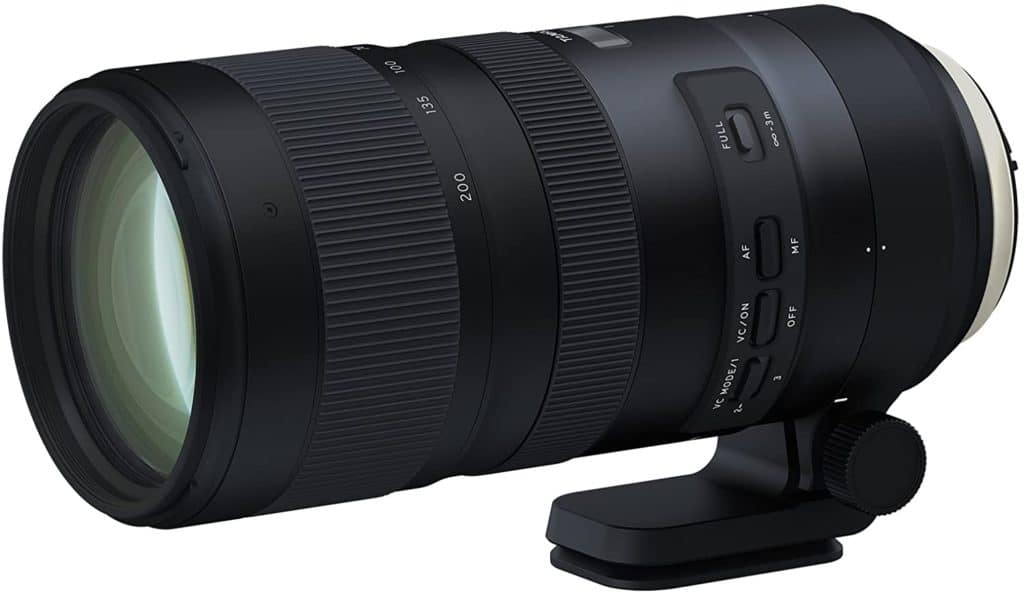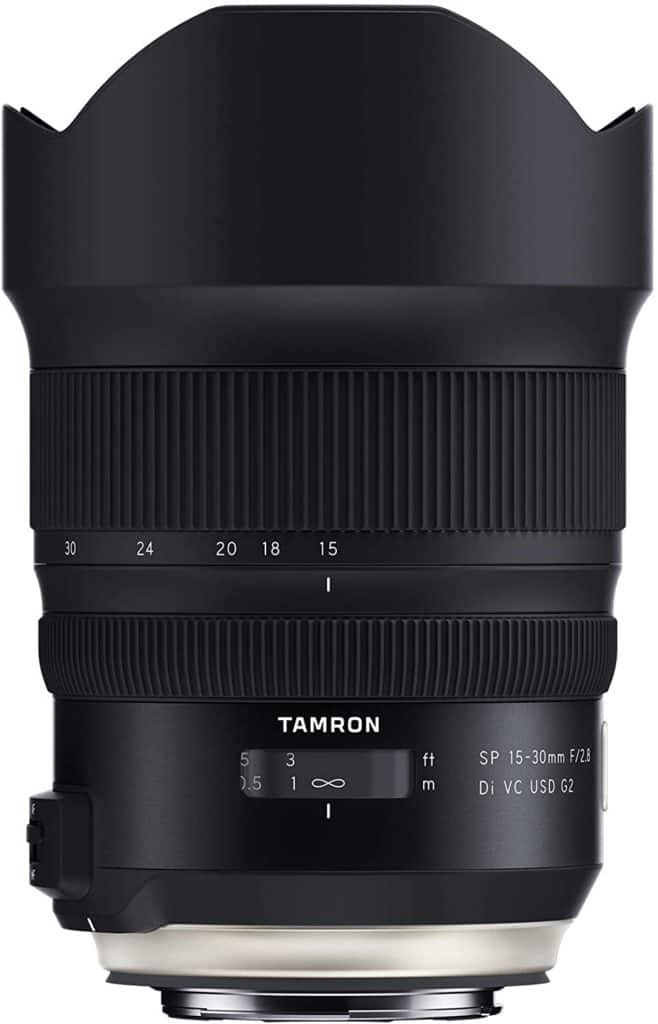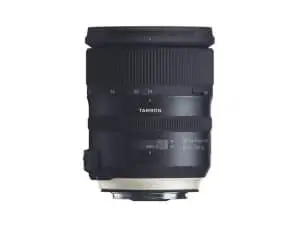Trinity Lenses
After outgrowing the “kit” lens(es) that came with your camera, and you have outgrown your 50mm prime lens, it is time for some real lenses! If you are at that point you probably shouldn’t call yourself a beginner anymore. If you are buying these lenses for your camera then you are officially a hobbyist photographer at worst, and probably getting close to going semi-pro or pro once you master them!
What is the Lens “Trinity”?
Photographers often call a group of 3 lenses the “trinity” of lenses because with the focal lengths provided by all 3 of them a photographer can generally shoot anything they want. Generally is a key there. There are specialty cases where these 3 lenses would not be the best choice.
They may not shoot architecture (tilt-shift better there), astro (wide, fast prime with an emphasis on coma control), or wildlife (not long enough focal length) sufficiently to name a few examples.
Still, it is totally worth investing in these three lenses if you are ready to make the next step in your photography. The trinity is made up of three fast, high quality, lenses that “zoom” in and out. Let’s walk through the things photographers should look for in these lenses.
Constant and Fast Aperture
These three lenses should have a constant and “fast” aperture. Fast here doesn’t mean that it does anything fast. Fast means the aperture can be really wide open, usually a value of f/2.8. Constant means that the lens can open up to that wide aperture of f/2.8 on all focal lengths of the lens.
This is very different from the inexpensive and lower quality lenses that come with a camera. Those are called kit lenses, because they were included in a kit when you bought the camera, and even though they zoom in and out the aperture usually goes from about f/3.5 when zoomed all the way out (smallest millimeters) and f/5.6 when zoomed in (biggest millimeters).
Let’s use an example. A common kit lens is an 18-55mm f/3.5 – f/5.6. When the lens is zoomed out as much as possible at 18mm the widest open the aperture goes (“fastest” it goes) is f/3.5. It can’t reach f/2.8. If you zoom the lens all the way out to its longest focal length, 55mm, the situation with the aperture gets worse as now the widest open it goes is f/5.6.
There is a HUGE advantage to being able to have the ability to shoot at f/2.8 and in having that wide open aperture available no matter what the focal length is at (no matter how zoomed in our out).
Stabilization
A trinity lens should also have image stabilization. Unfortunately all of the lens manufacturers call this different things. Canon calls it image stabilization (IS), Nikon calls it vibration reduction (VR), Sigma calls it optical stabilization (OS), Tamron calls it vibration compensation (VC). They all means the same thing.
To explain stabilization we need to first talk about how things work without it. I teach a general rule for shutter speed I call the 2×4 rule. If you are hand holding your camera (don’t have it on a tripod) and you are creating a photo of something that is not moving or moving pretty slowly (like a flower in a breeze), the slowest your shutter speed can be is 2x the focal length of your lens. If you are creating an image of something moving, like someone running, the slowest your shutter speed can be is 4x the focal length.
Here is an example. Lets say you are shooting that 18-55mm kit lens I just talked about. The longest focal length is 55mm, so that is the value I would use for the general rule so that you can zoom in and out between 18mm and 55mm all you want and don’t have to change your shutter speed. If you are creating an image of something still while hand holding the camera you should set the shutter speed any slower than 55×2=110 or 1/110 of a second. Most cameras don’t let you set the shutter to 1/110 so you would round up to the next value of 1/125.
If you were shooting something moving with that same lens, you would need to shoot with the shutter speed no slower than 55×4=220 which rounding up would be 1/250 of a second.
This is a general rule of thumb. Some photographers have better shooting technique and steadier hands than other and can cheat that rule a little. Some find that they have to go more like 4×8. I have found 2×4 to be pretty good for me, though I have to go more like 6x or 8x the focal length as I shoot sports like high school basketball.
Following the 2×4 rule helps eliminate the possibility that your hand shaking will negatively effect the sharpness of the image. Stabilization is a feature in a lens that allows you to cheat this rule and take photos with a slower shutter speed.
There are glass elements inside the lens and when a lens is stabilized it means the manufacturer has built a suspension system for those glass elements so that little shakes of the lens won’t make them move.
Build Quality
Overall trinity lenses are just built better. They are able to take one some rain, or sand. They have special coatings to help with lens flare. They have better glass elements manufactured more precisely helping with issues like chromatic aberration. That precision also means they are more consistent from lens to lens with regard to sharpness and optical quality.
Expensive
All of these benefits means they are expensive. Not only because there is more value to photographers, but because there they are considerably more expensive to manufacture.
You are likely to spend close to as much on a trinity lens as you did on your camera body. I remember seeing that for the first time and thinking I will never be able to do that. It is hard, but believe me, it is completely worth it. The saying among photographers is that you date your camera body but you marry your lenses.
Take a look at the name brand lenses for your camera for sure. Guaranteed they are excellent lenses. The problem for me as a hobbyist is that they are also outrageously expensive. The good news is third party lenses these days are also extremely good. In some cases lenses from Tamron or Sigma may be newer and slightly sharper than the name brand.
It wasn’t always that way. When I first started into photography third party lenses were adequate but mostly a step down from name brand. The sharpness wasn’t as good. The build quality wasn’t as good. The autofocus didn’t work as well with them. All of that has changed and today I have no hesitation in recommending third party lenses make up your trinity.
Unless you switch manufacturers, these lenses are likely to be with you for years. Even if you decide to upgrade your camera body to the latest hot release from your manufacturer, the lenses likely will remain.
The three lenses cover a focal length of about 11mm up through 200mm. The “ultra-wide” is usually about 11mm to 24mm. Then comes the “standard” zoom is about 24mm to 70mm. Finally, the “telephoto” lens is about 70mm to 200mm. Let’s go through each one, talk about what type of photography it is best suited for, and my recommendation on which to buy.
The list is in the order I recommend you buy them. Just in case the budget can’t cover all three at once (I still don’t have all three).
Standard Zoom 24-70mm f/2.8
After the “nifty fifty” lens, the 24-70 is the next lens you should buy. If you are shooting a crop sensor camera, the 24-70mm is the lens that is the most versatile of all of the three.
On the 24mm side of the lens it is wide enough to get a lot in the field of view. On the 70mm side it zooms in pretty good to make it possible to be a little ways back from you subject and still bring it in tight.
Shooting a family party? 24-70. Senior portraits? 24-70 will do very nicely. That incredible sunrise on your vacation? Yep, 24-70.
It isn’t perfect for everything. That is why it is a trinity. Still, the 24-70 stays on my camera (a crop sensor camera) about 90% of the time because it is so versatile.
I use the Tamron SP 24-70mm F/2.8 Di VC USD G2 (Canon|Nikon|Sony). I have to admit that I am an absolute Tamron fanboy. I love these lenses! I don’t think you can beat the quality. Especially not for the price. Seriously, take a look at the name brand and then take a look at the Tamron and you will see you can save yourself some serious money.
In case you are wondering about all of the numbers and letters in the name of the lens here is how it breaks down (this is specific to Tamron):
- “SP” is Tamron’s indicator for their lenses that it is a “pro” model
- 24-70 are the focal lengths that you can “zoom” between
- f/2.8 means that this lens can open up as wide as f/2.8 through the entire 24-70 focal length (also called “fast” by photographers)
- “Di” stands for “digitally integrated” and is Tamron’s way of saying it is built specifically for digital photography
- “USD” stands for “ultrasonic silent drive” and means Tamron has engineered the lens to do autofocus with as little noise as possible
- “G2” means it is the second generation lens in this line. The first generation has no indicator (not a G1) and I highly recommend the G2 version over the first version even though the cost difference is quite a lot.
It takes an invest to be sure. At about $1,200 it was tough for me to make the investment. I had to really think about it for a while. Even after saving the money it was really hard for me to push that buy button. I did do it, and I am so happy that I did. Having this kind of quality in a lens has made a bigger difference to the quality of my images than any other piece of gear.
A close second choice is the Sigma 24-70mm f/2.8 DG OS HSM Art. At a very similar price of about $1,200 the only reason I chose Tamron over Sigma was cost. At the point where I was buying the Tamron was a little less expensive. Other than that, there is really very little difference between these two lenses.
Telephoto Zoom 70-200mm f/2.8
After the 24-70, you should save your pennies for the 70-200mm f/2.8 lens. This is my go-to lens for sports, dance, or anything where you can’t get very close to the performers. If you are shooting a full frame camera this is the lens that you would use for portraits.

Either way, you should look to invest in a 70-200. Like the 24-70, my favorite is the Tamron SP 70-200mm F/2.8 Di VC G2 (Canon|Nikon|Sony). A close second is the Sigma 70-200mm F2.8 Sports DG OS HSM (Canon|Nikon).
Wide Angle Zoom 16-35mm f/2.8
Bringing up the rear as far as my recommended priority is the wide angle focal length. These lenses are more suitable for landscape photography and being “fast” (a wide open aperture) lens they could even be used for astrophotography.
NOTE: The Rokinon FE14M-C 14mm F2.8 Ultra Wide (Canon|Fuji|Nikon|Olympus) is my favorite for astrophotography.

You guessed it, my favorite wide angle lens to close out the trinity is the Tamron SP 15-30mm F/2.8 Di VC USD G2 (Canon|Nikon). You may have noticed it doesn’t actually go all the way to 35mm, but that is covered by the 24-70 and it goes a touch wider at 15mm.
Yep, the close second is the Sigma 14-24mm F2.8 DG HSM (Canon|Nikon|Sony). This one goes a bit wider than the Tamron which is a big benefit shooting landscapes and would be a very solid choice.


